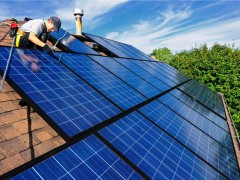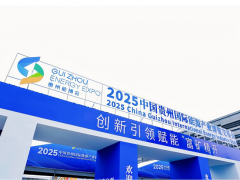據(jù)OE網(wǎng)站8月16日報道,根據(jù)伍德麥肯茲(Wood Mackenzie)的一份新報告顯示,未來五年,勘探支出(不包括評估)將從歷史低點回升至平均每年220億美元的實際水平。
伍德麥肯茲最新的“勘探悄然復(fù)蘇”報告顯示,有吸引力的勘探經(jīng)濟(jì)、能源安全需求以及新領(lǐng)域的出現(xiàn),將激勵以國有石油公司和大型石油公司為首的油氣公司在2027年之前增加勘探支出。
伍德麥肯茲全球勘探研究主管朱莉·威爾遜(Julie Wilson)表示,未來幾年,勘探者將變得更加大膽。盡管這種反彈可能會讓一些人感到意外,但必須放在大背景下看待。2006年至2014年期間,勘探經(jīng)歷了繁榮,支出達(dá)到790億美元的峰值(按2023年條款計算)。但在之前的六年里,每年的平均收入為270億美元(按2023年條款計算)。雖然支出會增加,但不會回到接近過去高點的水平,而且增長可能會有上限。缺乏能夠滿足當(dāng)今經(jīng)濟(jì)和ESG指標(biāo)的高質(zhì)量前景,繼續(xù)關(guān)注資本紀(jì)律將遏制超支情況發(fā)生。
該機(jī)構(gòu)預(yù)計,增長從2023年開始,預(yù)計支出將比2022年總額增長6.8%(按實際條款計算)。勘探活動增加的一個主要驅(qū)動因素是穩(wěn)健的商業(yè)案例。據(jù)伍德麥肯茲稱,自2018年以來,勘探的全周期回報率一直高于10%,2022年超過20%。
威爾遜表示,這些積極的結(jié)果增強(qiáng)了人們對勘探的信心。業(yè)績的改善歸因于許多因素:投資組合的高評級,加上在支出和前景選擇方面的更嚴(yán)格資本紀(jì)律,意味著只有最好的前景區(qū)塊才能被鉆探,損失達(dá)到最小化。效率的提高也有助于提高開發(fā)和勘探的回報。
從長遠(yuǎn)來看,深水和超深水將為勘探提供最多的增長機(jī)會。非洲大西洋沿岸和東地中海地區(qū)將經(jīng)歷最大的增長,并將在一些未指明的新領(lǐng)域進(jìn)行支出。
威爾遜補(bǔ)充道,有些地區(qū)正在利用最近的地震數(shù)據(jù)尋找線索和前景,例如烏拉圭、阿根廷南部和馬來西亞深水區(qū)。未來在“成功案例”領(lǐng)域的支出是在成功之后的額外探索,無論是在納米比亞或希臘這樣的邊境地區(qū),還是在埃及尼羅河三角洲這樣更為成熟的區(qū)域。
郝芬 譯自 OE網(wǎng)站
原文如下:
Oil and Gas Exploration Spending Expected to Recover from Historic Lows
Exploration spending (excluding appraisal) will recover from historic lows to an average of $22 billion per annum in real terms over the next five years, according to a new report from Wood Mackenzie.
Tailwinds from attractive exploration economics, the need for energy security and the emergence of new frontiers will incentivize oil and gas companies, led by NOCs and Majors, to increase exploration spending through 2027, according to Wood Mackenzie’s new “Exploration quietly recovering” report.
“Explorers will become bolder in the coming years,” said Julie Wilson, director of global exploration research at Wood Mackenzie. “While this rebound might surprise some, it must be seen in context. Exploration went through a boom during 2006-2014 and spend peaked at US$79 billion (in 2023 terms). But in the prior six years, the average was US$27 billion per year in 2023 terms.
“While spending will increase, it won’t return to anywhere close to past highs and there will likely be a ceiling on the increase. There is a lack of high-quality prospects that would satisfy today’s economic and ESG metrics and a continued focus on capital discipline will keep a lid on overspending.”
The growth will begin in 2023, with spending projected to increase 6.8% over 2022 totals (in real terms). A major driver for this increased activity is the robust business case. According to Wood Mackenzie, full-cycle returns from exploration have been consistently above 10% since 2018 and exceeded 20% in 2022.
“These positive results have increased confidence in exploration,” said Wilson. “Improved results are down to many factors. Portfolio high-grading coupled with greater discipline in spending and prospect choice mean only the best prospects are drilled and waste is minimized. Efficiency gains also serve to enhance the returns from both development and exploration.”
In the long term, deepwater and ultra-deepwater will provide the most growth opportunities for exploration. The Atlantic Margin of Africa and the Eastern Mediterranean regions will experience the greatest growth and there will be spend in some unspecified new frontiers.
“There are areas where leads and prospects are being worked up with recent seismic data, for example Uruguay, southern Argentina and deepwater Malaysia,” added Wilson. “Future spend in ‘success case’ areas is additional exploration following success, whether that's in a frontier like Namibia or Greece, or a more established province like Egypt's Nile Delta.”
免責(zé)聲明:本網(wǎng)轉(zhuǎn)載自其它媒體的文章及圖片,目的在于弘揚(yáng)石化精神,傳遞更多石化信息,宣傳國家石化產(chǎn)業(yè)政策,展示國家石化產(chǎn)業(yè)形象,參與國際石化產(chǎn)業(yè)輿論競爭,提高國際石化產(chǎn)業(yè)話語權(quán),并不代表本網(wǎng)贊同其觀點和對其真實性負(fù)責(zé),在此我們謹(jǐn)向原作者和原媒體致以崇高敬意。如果您認(rèn)為本站文章及圖片侵犯了您的版權(quán),請與我們聯(lián)系,我們將第一時間刪除。







